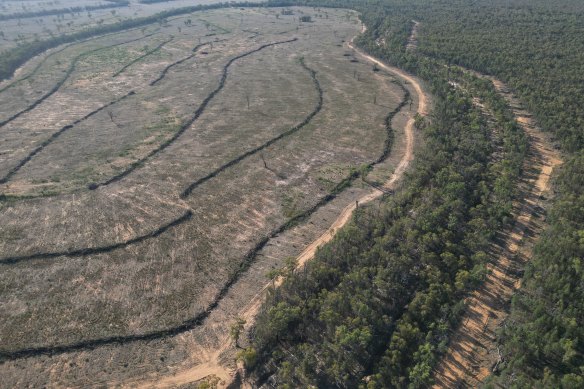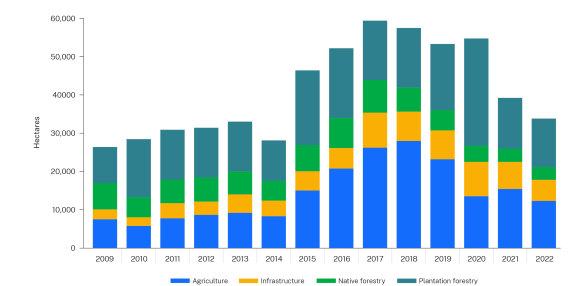
“We have already lost more than half of our forest in Australia, and that means we have a substantial amount of forest left as well, but most wealthy countries have put a stop to any ongoing clearing and are really working hard to protect and keep forest standing.”

Land clearing at Cuttabri in north-western NSW. Image taken in 2023.Credit: Australian Conservation Foundation
A 2021 global report from WWF listed Eastern Australia as a “deforestation front” along with Africa, South-East Asia and Latin America.
Pelle said land clearing meant less habitat for Australia’s threatened species, while many feral predators such as cats did better in a cleared landscape.
Protecting forests as carbon sinks is also essential to halt global warming, and Australia is a signatory to the Glasgow Leaders Declaration on Forests and Land Use, a global commitment to end deforestation and land degradation.
The SLATS figures suggest the biggest cause of the land clearing in NSW was agriculture, which accounted for 12,283 hectares. Infrastructure was next with 5509 hectares, followed by native forestry with 3339 hectares.
Land clearing in 2022 was lower than 2021, but remains higher than 2009-2014, before controversial reforms by the former Coalition government.

Land clearing in 2022 remains higher than before 2015.Credit: NSW Statewide Landcover and Tree Study
The SLATS figures suggest that 15.7 per cent of clearing of woody vegetation clearing was under the Local Land Services Act, which was amended to be more permissive to landowners in 2016.
Land clearing went up in 2015 when the former government flagged it would change land clearing laws, and spiked in 2017 after the looser laws took effect.
Loading
NSW Environment Minister Penny Sharpe said: “This report shows that land clearing in NSW remains too high. The NSW government is committed to turning this around.”
The figures since the election of the Minns government in March 2023 are unlikely to be better since the underlying legislation has not changed yet.
The 2016 legislation was opposed by Labor at the time. Sharpe and Agriculture Minister Tara Moriarty announced proposed changes in July, which are now out for consultation.









 Add Category
Add Category